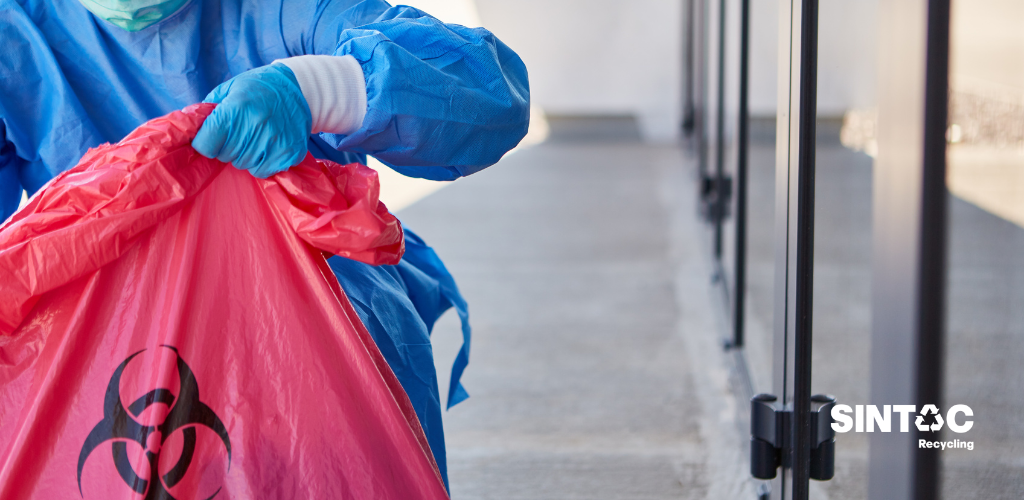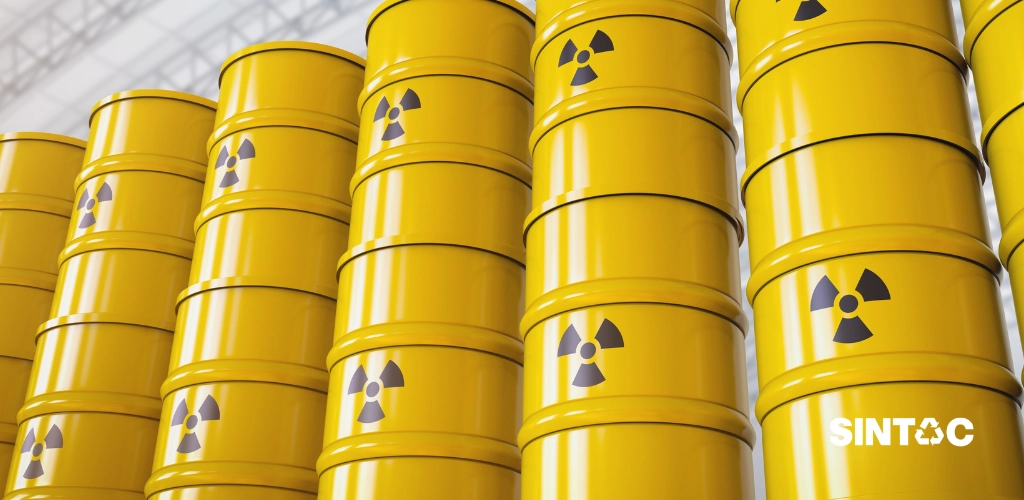What is hazardous waste?
Every year we generate between 7 and 10 billion tonnes of waste worldwide, and more than 300 million tonnes of this is hazardous or toxic waste, i.e. waste with properties that pose health and environmental risks. This figure is too important not to be taken into account and to encourage the reduction of waste which, if not managed correctly, can put the planet at risk. Unlike paper or plastic waste, hazardous waste has physical, chemical or biological properties that are harmful to people, animals and the natural environment.
However, just because they are harmful does not mean that they are unusual or infrequent. Sectors as important and necessary as healthcare, pharmaceuticals, chemicals and electronics generate toxic waste every day.
As a result, more and more institutions and companies, such as SINTAC, are committed to the environment and are developing policies aimed at this objective.
Examples of hazardous waste
In order to better understand what types of materials may qualify, we list some examples of hazardous waste, or at least the most common ones:
- Toxic chemicals: Toxic chemicals are found in industrial chemicals such as solvents, acids, bases or pesticides. They are also found in expired pharmaceuticals.
- Productos químicos tóxicos: Las sustancias químicas tóxicas se encuentran en productos químicos industriales como disolventes, ácidos, bases o pesticidas. También se encuentran en productos farmacéuticos caducados.
- Biological infectious waste: Medical waste, such as used needles and blood-contaminated products, can be hazardous if not handled properly.
- Heavy metals: Lead, mercury, cadmium and other heavy metals are toxic and can contaminate soil and water if released into the environment. They therefore need to be managed and treated appropriately.
- Waste oils: Although seemingly harmless, waste oils from vehicles and machinery contain chemical contaminants. They are an example of hazardous waste that must be properly managed and recycled to reduce their impact on the environment.

Classification of hazardous waste
Hazardous waste is classified according to its hazardous properties. In general, they are divided into four main categories:
- Flammable wastes: these are materials that can easily catch fire, such as solvents or flammable gases.
- Corrosive waste: in the classification of hazardous waste, we find this type of substances that can corrode or destroy other materials. This is the case of strong acids and bases.
- Reactive wastes: these are materials that may react violently when in contact with other substances, such as organic peroxides.
- Toxic waste: this hazardous waste contains substances that can harm human health or the environment. These include heavy metals and toxic chemicals.

Where and how hazardous waste should be recycled
The proper management of hazardous waste is essential to prevent environmental damage and protect public health. Therefore, it is necessary to put into practice a series of guidelines that guarantee its correct treatment and, if possible, its recycling and recovery. Some of the most important are:
- Identification and separation: It is crucial to differentiate between hazardous waste and other types of waste, such as plastic, which can be recycled more easily and without risk. Proper separation of these materials at home, in businesses and at recycling centres is an essential step to ensure that hazardous waste is not mixed with other materials.
- Safe storage: Hazardous waste must be stored in secure and properly labelled containers to prevent spills and accidents.
- Safe transport: In addition to proper storage, hazardous waste must be transported properly and safely. When hazardous waste is moved, strict safety regulations must be followed to prevent leaks or spills en route.
- Recycling and disposal: Most hazardous waste can be recycled or disposed of safely. Authorised recycling and disposal centres should be used for this purpose. Hazardous chemicals can be neutralised or treated prior to disposal.
- Local and national regulations: It is important to comply with local and national regulations related to hazardous waste, as they may vary by location.













